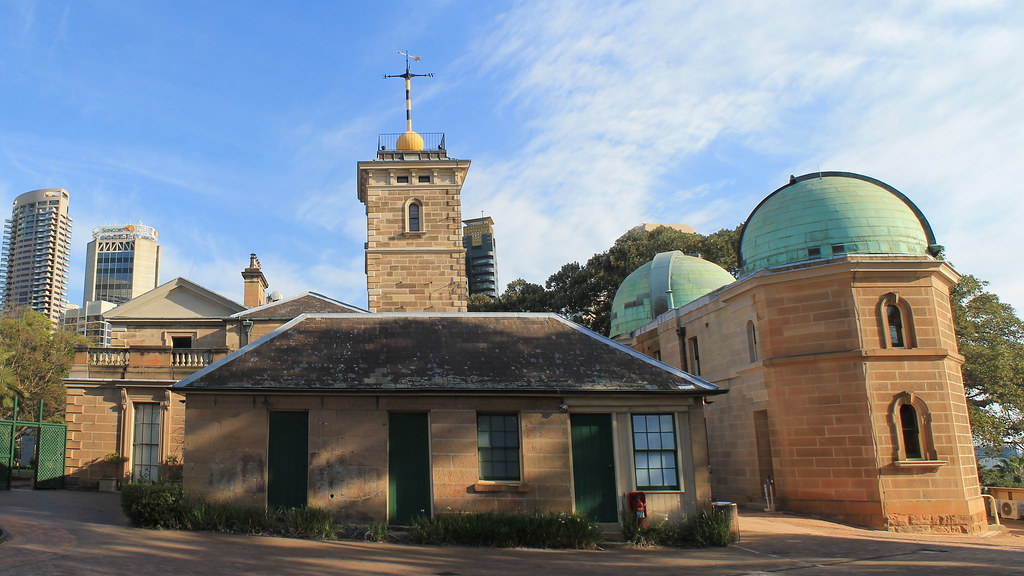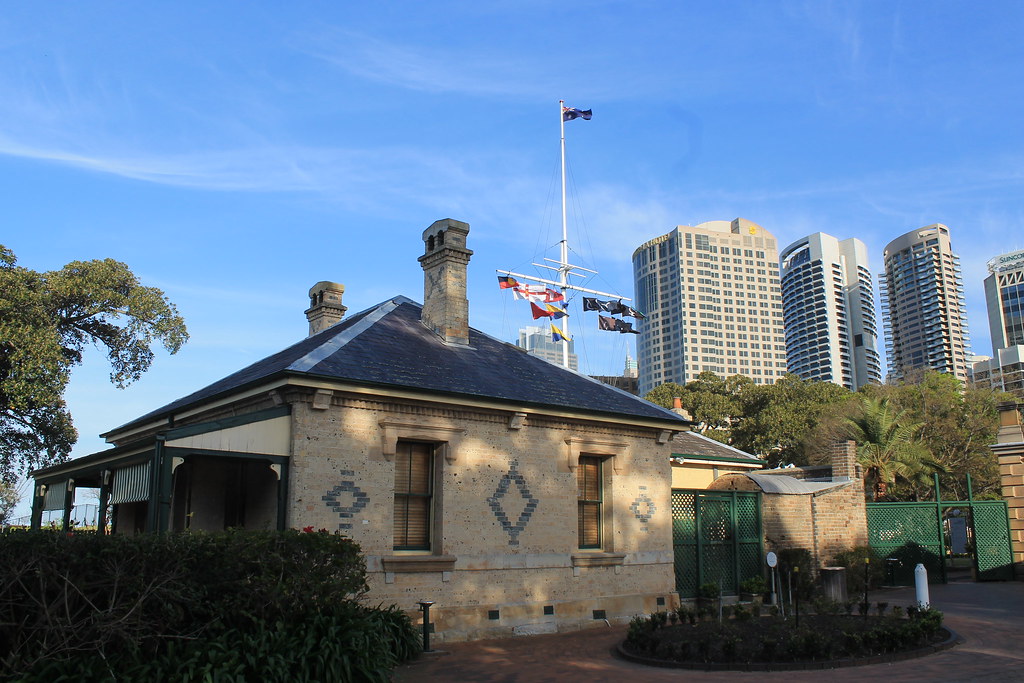What happened instead is that I bought my book, but once I got down to Circular Quay decided to head up into The Rocks to find a little licorice stand that sells all flavors of licorice and wander. With my licorice in hand, I ended up walking under the Sydney Harbour Bridge to the quieter side of The Rocks. Here, the neighborhoods are quaint and you can imagine what it was like as Australia's first European settlement.
One of the things I never really realized was that part of Captain James Cook's voyage to the Southern Lands was to observe the transit of Venus across the sun - the transit is kind of like an eclipse where Venus passes directly between Earth and the sun. Measuring it's transit allowed scientists in the 1700s to better determine just how far away from the sun Earth is. Come to think of it, what a terrifying world the people of that time must have lived in, generally not knowing if the Earth was moving closer to the sun each year, or what. So in 1784 Captain Cook arrived in Tahiti to measure just that and on that voyage, Australia was settled. The special thing about the transits of Venus is that they occur twice, separated by eight years, and then do not reoccur for another 100 years. So when the time is right, careful measurements must be made or risk waiting a century before trying again.
Once Sydney was settled, one of the first tasks was to construct the Sydney Observatory. Now, I always just thought that observatories were for looking at stars and planets and into space, but I didn't realize how much importance they had for everyday commerce. For example, it would have been impossible for merchants, sailors, and governmental institutions to keep the correct time without the observatory. Every day at 1:00pm, a time ball on the spire on top of the observatory was raised and it began a slow descent over the course of the day - much in the same way, but much less glitzy, the ball drops in Times Square marking the start of a new year in New York City. The time ball was operated at the observatory because measurements of time were based off of the movement of stars and were taken by the astronomers at the observatory.
 |
| Back side of the Observatory with the Time Ball seen on the top tower |
Another neat feature outside the observatory is the Flagstaff which was a means of communication between the city observatory and the signal station at the south head of the harbor. Different flags indicated the different names of ships entering the harbor, where the ships were coming from, and what was their cargo. Other signal stations around the harbor also sent messages to ships on the water and those leaving the harbor of weather conditions and other information.
 |
| Flagstaff and Signal Keeper's Quarters |
Inside the observatory is like stepping back in time, yet also into the future. Numerous nautical instruments are on display, log books, telescopes, models of the solar system, and information panels about the advancement of observatory technologies today. It is all free and a fascinating place to wander around. Another one of the really interesting things I learned there is that while at sea, it is easy to determine one's position North or South; however, it is much more difficult to determine your longitudinal position - East or West. This was especially tricky for the first explorers who set out to map the Australian coastline; however, it was completed successfully and some of the material from that expedition is on display at the Observatory.
Thoroughly impressed by the quiet piece of greenery on the west side of the Rocks, I made my way back down to the city and over to the Botanical Gardens. I still had maybe an hour of daylight and thought it would be a nice time to take some photos of the Opera House and the Harbour Bridge (I really won't ever tire of doing that!). After getting some good shots, I thought at least, I started to head back home through the Gardens and was lucky enough to catch some of the birds who live in the Gardens including a kookaburra (which I personally really enjoyed), cockatoos eating nuts, an ibis, and some dusky moorhens.
 |
| Kookaburra |

No comments:
Post a Comment